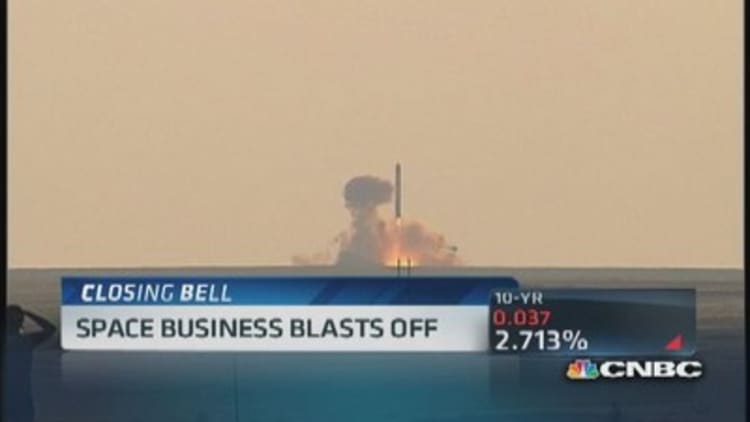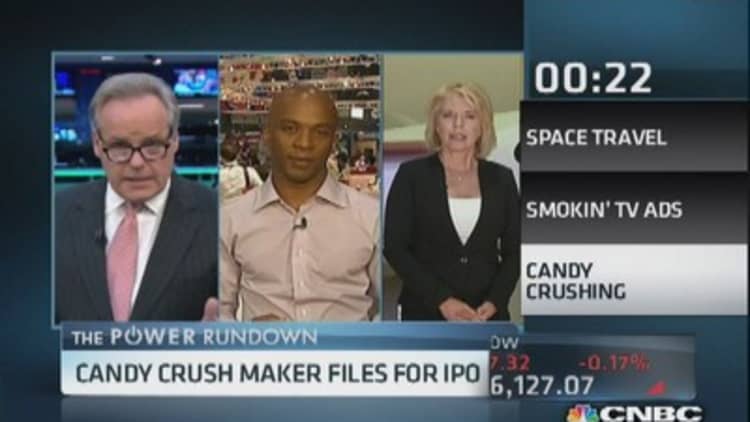
A tall hangar rises out of nowhere, surrounded by concertina wire and tumbleweeds on the barren outskirts of North Las Vegas. In this dry, unforgiving place, Robert Bigelow is designing housing that will have to withstand much harsher conditions.
Here, inside Bigelow Aerospace, the man who made a fortune putting up hotels is now building inflatable space habitats. Seven years ago, he successfully launched two test habitats into orbit to obtain data about their strength, durability and radiation protection.
Bigelow is finally at work on the real deal, including a small habitat that will be tested at the International Space Station (ISS) next year and two larger units (330 cubic meters) that are expected to be ready to launch by 2016.
"We've always been on the destination side of the coin," he said in a rare interview inside his headquarters. "We're hostage to the transportation folks, the taxi folks."
(Read more: US must beat China back to the moon: Entrepreneur)
Bigelow believes "the taxi folks" will be able to ferry crew and cargo to his private destinations by 2017. He has delivered a report to NASA suggesting that a company could rent out one-third of a habitat for 60 days for $25 million, though the cost of catching a ride there via Elon Musk's SpaceX could run $26.5 million a seat.
Bigelow's venture began more than 12 years ago, after he read that NASA had cut funding for a program to explore inflatable habitats—housing that could be folded up and tucked into a rocket, then expanded in orbit to house several people.
"I couldn't believe the program had been stopped," Bigelow said. As an experienced builder, he persuaded NASA to grant him an exclusive license to the technology, and he launched Bigelow Aerospace.
(Read more: Why your next home may look more like a snow globe)
Current housing on the ISS is rigid and made of aluminum, which Bigelow said does not provide the best protection against radiation. The BA-330 habitats expand to three times the size of housing units on the ISS, and he's beginning to build a mock-up of a much larger unit called the Olympus that will open to a spacious 2,250 cubic meters.
The Olympus will need a "superheavy" launch rocket, though, and Bigelow believes he will have to build it near a seaport and ferry it to a launch site.

He's also designing a lunar base to house astronauts, scientists, miners or whoever may end up on the moon. However, the base would be made in low Earth orbit—say, near the ISS, and then pushed to lunar orbit and the Moon's surface using tugs the company is also designing. Bigelow would not construct the base on the Moon itself.
"If you've ever been on a construction site at night, you see all the service trucks there from all the stuff that went wrong the day before," he said. Waiting until you get to the moon to construct housing is "asking for a whole lot of trouble."
Bigelow recently filed with the Federal Aviation Administration to amend a 1967 space treaty so that anyone who makes it to the Moon can have private property considerations.
"There is already a policy that declares that if you have a habitable system in space, that there is a standoff zone of 200 miles," he said. "We're asking for the same consideration on the Moon."
Private companies might take the big risks needed to further humanity's return to the Moon only if the profit motive of mining minerals there could be guaranteed. With the amendment he is proposing, "Landings can occur, but not right in your own backyard," Bigelow said.
(Read more: Space tourism incubating in California's Mojave Desert)
Bigelow Aerospace is hoping to hire six astronauts this year and provide them with housing in Las Vegas. The company is also in discussions with foreign governments about helping them move forward with their own plans for space.
The venture is a so costly a gamble that only those with the deepest pockets can afford to wager. When asked how much money he's spent on this, Bigelow said, "I stopped counting at $250 million."
Timing is everything, he said, and housing and transportation need to be in sync. "It doesn't do us any good to be there alone."
Still waiting for the opportunities and affordability of space to reach critical mass, Bigelow said, "The International Space Station cannot produce enough demand by itself to support even two transportation companies. There is a serious need to have one or more destinations."
—By CNBC's Jane Wells. Follow her on Twitter: @janewells


